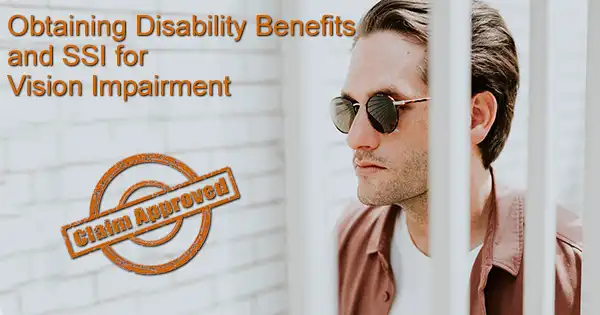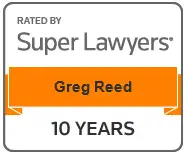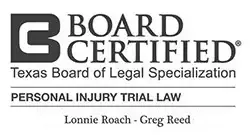Obtaining SSDI disability benefits and SSI for Vision Impairment
Can I get financial assistance through Social Security disability or Supplemental Security Insurance if I am suffering from the effects of vision impairment?
Author: Attorney Lonnie Roach
Updated: 9/27/2024
Summary: Can I qualify for disability benefits if I am blind?
First you must meet the SSA’s financial requirement: You must have worked long enough, recently enough, and not made over a predetermined level of income.
Second you must meet the medical requirements:
Social Security defines blindness as a “central visual acuity of 20/200 or less in the better eye with best correction, or a limitation in the field of vision in the better eye so that the widest diameter of the visual field subtends an angle of 20 degrees or less.” To qualify for Social Security benefits vision loss must be significant. If an applicant’s vision in both eyes is 20/200 or worse, they will qualify for disability under listing 2.02; if their vision in only one eye is bad, they will not be approved for benefits. Under SSDI, the condition must have lasted or be expected to last at least 12 months while there is no duration requirement under SSI.
Although technology has improved the lives of blind and visually impaired people, daily tasks can still be difficult and some individuals may be unable to continue working. Due to a loss of income and medical insurance, they may seek assistance from Social Security. Social Security pays benefits to people who are blind under Social Security Disability Insurance and Supplemental Security Income. Though the SSA’s definition of blindness applies for both SSDI and SSI, some rules governing each program are different and there are rules that apply to legally or totally blind applicants that do not apply to nonblind disabled applicants.

Certain impairments, such as blindness, automatically qualify an individual for Social Security benefits. To qualify for Social Security benefits vision loss must be significant. If an applicant’s vision in both eyes is 20/200 or worse, they will qualify for disability under listing 2.02.
Certain impairments, such as blindness, automatically qualify an individual for Social Security benefits.
Social Security defines blindness as a “central visual acuity of 20/200 or less in the better eye with best correction, or a limitation in the field of vision in the better eye so that the widest diameter of the visual field subtends an angle of 20 degrees or less.” To qualify for Social Security benefits vision loss must be significant. If an applicant’s vision in both eyes is 20/200 or worse, they will qualify for disability under listing 2.02; if their vision in only one eye is bad, they will not be approved for benefits. Under SSDI, the condition must have lasted or be expected to last at least 12 months while there is no duration requirement under SSI.
Contact a Social Security disability attorney at 512-454-4000 for a free consultation and see if you can get disability benefits while suffering from vision impairment. If you have been denied disability don’t give up!
Social Security describes how it evaluates visual impairment very specifically under Section 2.00 of its Blue Book
A. How do we evaluate visual disorders?
1. What are visual disorders?
Visual disorders are abnormalities of the eye, the optic nerve, the optic tracts, or the brain that may cause a loss of visual acuity or visual fields. A loss of visual acuity limits your ability to distinguish detail, read, or do fine work. A loss of visual fields limits your ability to perceive visual stimuli in the peripheral extent of vision.
4. What evidence do we need to evaluate visual disorders, including those that result in statutory blindness under title II?
To evaluate your visual disorder, we usually need a report of an eye examination that includes measurements of your best-corrected central visual acuity (see 2.00A5) or the extent of your visual fields (see 2.00A6), as appropriate. If you have visual acuity or visual field loss, we need documentation of the cause of the loss. A standard eye examination will usually indicate the cause of any visual acuity loss. A standard eye examination can also indicate the cause of some types of visual field deficits. Some disorders, such as cortical visual disorders, may result in abnormalities that do not appear on a standard eye examination. If the standard eye examination does not indicate the cause of your vision loss, we will request the information used to establish the presence of your visual disorder. If your visual disorder does not satisfy the criteria in 2.02, 2.03, or 2.04, we will request a description of how your visual disorder affects your ability to function.
A claimant will be required to undergo an examination by an ophthalmologist or optometrist to measure their central visual acuity, i.e. how clearly they can see straight ahead.
They may also have their visual field efficiency or peripheral vision tested. The applicant will be required to read letters from a chart at a certain distance away. If an individual’s vision is suspected to be better than stated, they may be required to undergo testing which measures brainwave responses to visual stimuli.
If an individual does not qualify for benefits due to poor visual acuity, a decrease in peripheral vision, or a combination of the two, they may be eligible if their vision impairment combined with other health problems reduces their ability to perform daily tasks or their job.
If an individual is unable to work in their regular position, the Social Security Administration will consider other jobs they may be able to perform.
In addition to the medical requirements for eligibility, in order to qualify for SSDI, a person must have enough work credits or worked long enough in a job and paid Social Security taxes.
A person earns work credits any time during their working years. If a person becomes blind but does not have enough work credits, they can earn credits to qualify for SSDI if they continue to work after they become blind, or they may receive benefits based on the earnings of a parent or spouse. In contrast, SSI payments are based on financial need and limited by the amount of the applicant’s income and assets. In general(for 2025), the income level for an individual is $967 and $1,450 for a couple; assets are capped at $2,000 for individuals and $3,000 for couples.
Social Security applies special rules for people who are blind or visually impaired to make it easier for them to work or return to work.
Generally, if a person is working and earning more than $1,620 per month, they will not be considered disabled. This is known as Substantial Gainful Activity or SGA. Social Security applies a higher SGA if a person is blind. An individual who is blind and receiving SSDI can earn as much as $2,700 per month. When a blind person reaches age 55, if they are earning SGA or above, but their work requires a lower level of skill than the work the individual performed before age 55 or when they became blind, SSDI benefits will be suspended, but not terminated. Eligibility for SSDI benefits continues indefinitely, and SSA pays benefits for any month earnings fall below SGA. SGA does not apply to people who are blind and receiving SSI. SSI continues until the disability ends or terminates due to a non-disability issue, such as earning a higher income.
Social Security calculates disability and retirement benefits based on a person’s average lifetime earnings.
If a person is blind and working, but their income has declined because of their visual impairment, Social Security can exclude or “freeze” the years of low-income earnings resulting in a higher benefit payment. In addition, when determining a blind person’s earned income, any expenses a blind person incurs to earn that income is not included in the calculation. These expenses are called Blind Work Expenses (BWE) and do not have to be related to blindness.
They include expenses and income such as:
- Attendant care
- Transportation to and from work
- Service animal expenses
- Translation materials to Braille
- Federal, state, and local taxes
- Social Security Taxes
- Visual and sensory aids
- Union dues and professional association fees
If you have a visual impairment and are unsure whether you are eligible for SSDI or SSI, you should apply for both.
You can apply for Social Security Disability Insurance (SSDI) online or in person at your local SSA office. If you apply for SSI, you must do so at a local Social Security office with an SSA representative. Usually it takes several months for Social Security to reach a determination, but if you are totally blind, you may qualify for six months of “presumptive blindness” benefits while waiting for a decision. Having a qualified attorney to assist you may speed the process and ensure that you receive the benefit you deserve.
We had a client who was a field sales representative living in Paige, Texas.
He suffered a branch retinal arterial occlusion (stroke) in his right eye, permanently impairing his field of view. Both his treating physician and Aetna’s reviewing physician agreed that he should not be employed in a position that required driving. Because his occupation required extensive driving, the client was forced to stop working and apply for long term disability benefits.
Aetna, nevertheless denied his claim. We filed a federal lawsuit and successfully overturned Aetna’s denial.
Disability benefits are an important source of income for those who are unable to work. If you not able to work due to accident or illness, you may be eligible for Social Security Disability or Long Term Disability benefits. If you have applied for benefits and been denied, contact the attorneys at Bemis, Roach and Reed for a free consultation. Call 512-454-4000 and get help NOW.
Macular Degeneration and qualifying for Disability Benefits
Breast Cancer can qualify for Social Security Disability
Social Security Disability for Neuropathy


Your Free Initial Consultation
Call now:
At Bemis, Roach and Reed, if we can't help you, we will try to find the right attorneys for you.
We offer each of our prospective clients a free no obligation one hour phone or office consultation to see if we can help you and if you are comfortable with us. We know how difficult a time like this can be and how hard the decisions are. If we can be of assistance to you and help you find a solution to your issue we will, even if that means referring you to another attorney.
Let's get you Started:
If you could provide us with some basic information about your claim we will get right back with you with a free case evaluation and schedule your Free Consultation Today.
You can also email us at: contact@brrlaw.com
Kind Words from Our Clients
“The attorneys and staff at Bemis, Roach & Reed have provided me and my husband, Jeff, with stellar advice, care, and service. They made navigating the SSDI process easy, painless, and as timely as possible. During this difficult time in our lives it was a tremendous relief to know they were on our side and keeping us updated on next steps and timelines. We also had questions about my husband’s long term disability insurance and they helped us get those questions answered and resolved without any additional fee. I highly recommend Bemis, Roach & Reed.” – Kelli G
“I needed a lawyer for my case and had googled best lawyers. They came up first on my list and decided to give them a call. From the moment I called I knew I chose the right people. They said they would fight for me and fight they did. They knew what they were doing and kept good communication throughout the process. If you need someone that will listen, understand, and fight then these are the people. HIGHLY RECOMMEND.” – Marcel L.
“I’ve had a great experience working with Bemis, Roach & Reed for my disability case. I spent two years fighting on my own, until I was informed to look for a disability lawyer. Right away, sending in questions was a breeze, and from the moment my case was accepted, everything became a major weight off my shoulders. My newest appeal was filed for me, my medical records and case history sorted for me, and I could finally focus on my appointments and treatment with a little less worry. Everything was explained to me in a way that made sense, the process was set out in an easy to understand way. And, just like that, at the beginning of July 2023, my claim was accepted!” – Sunshinemutt






